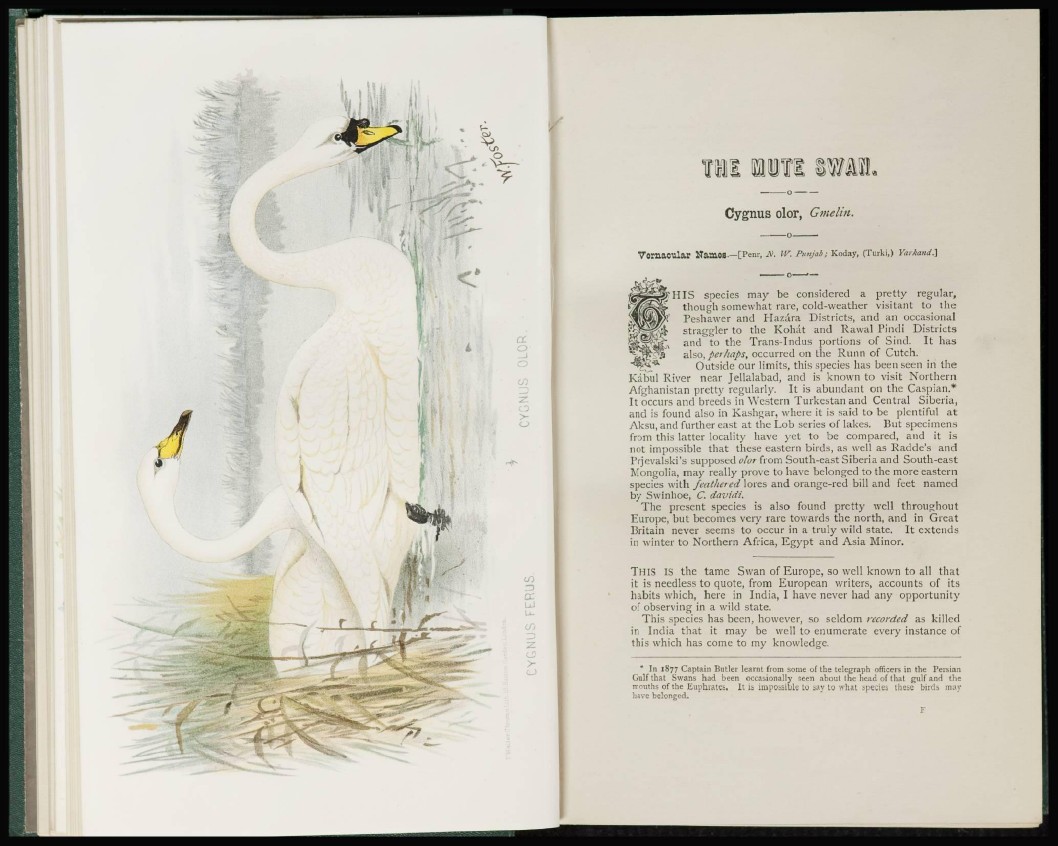
mi m
Cygnus olor, Gmelin.
Voraacular ITamOS-—[Penr, N. IV. Punjabi Koday, (Turki,) Yarkand\
HIS species may be considered a pretty regular,
though somewhat rare, cold-weather visitant to the
Peshawer and Hazara Districts, and an occasional
straggler to the Kohat and Rawal Pindi Districts
and to the Trans-Indus portions of Sind. It has
also,perhaps, occurred on the Runn of Cutch.
Outside our limits, this species has been seen in the
Kabul River near Jellalabad, and is known to visit Northern
Afghanistan pretty regularly. It is abundant on the Caspian.*
It occurs and breeds in Western Turkestan and Central Siberia,
and is found also in Kashgar, where it is said to be plentiful at
Aksu, and further east at the Lob scries of lakes. But specimens
from this latter locality have yet to be compared, and it is
not impossible that these eastern birds, as well as Radde's and
Prjevalski's supposed olor from South-east Siberia and South-east
Mongolia, may really prove to have belonged to the more eastern
species with feathered lores and orange-red bill and feet named
by Swinhoe, C. davidi.
The present species is also found pretty well throughout
Europe, but becomes very rare towards the north, and in Great
Britain never seems to occur in a truly wild state. It extends
in winter to Northern Africa, Egypt and Asia Minor.
THIS IS the tame Swan of Europe, so well known to all that
it is needless to quote, from European writers, accounts of its
habits which, here in India, I have never had any opportunity
of observing in a wild state.
This species has been, however, so seldom recorded as killed
in India that it may be well to enumerate every instance of
this which has come to my knowledge.
* In 1877 Captain Butler learnt from some of the telegraph officers in the Persian
Gulf that Swans had been occasionally seen about the head of that gulf and the
mouths of the Euphrates. It is impossible to say to what species these birds may
have belonged.
F